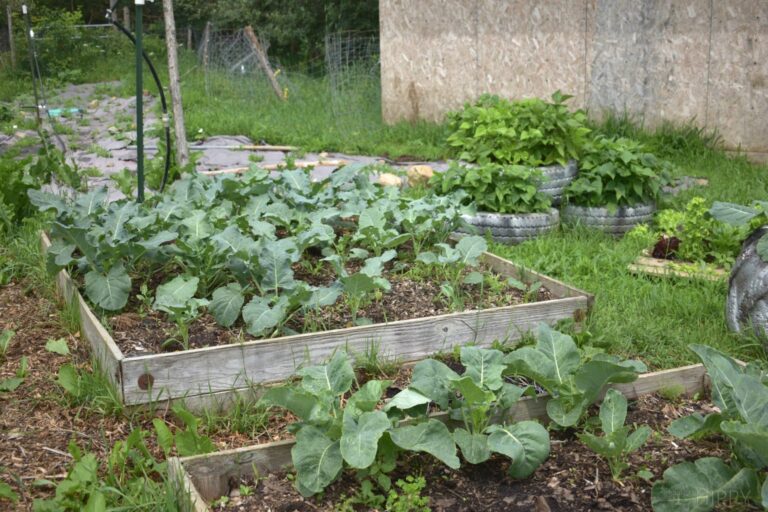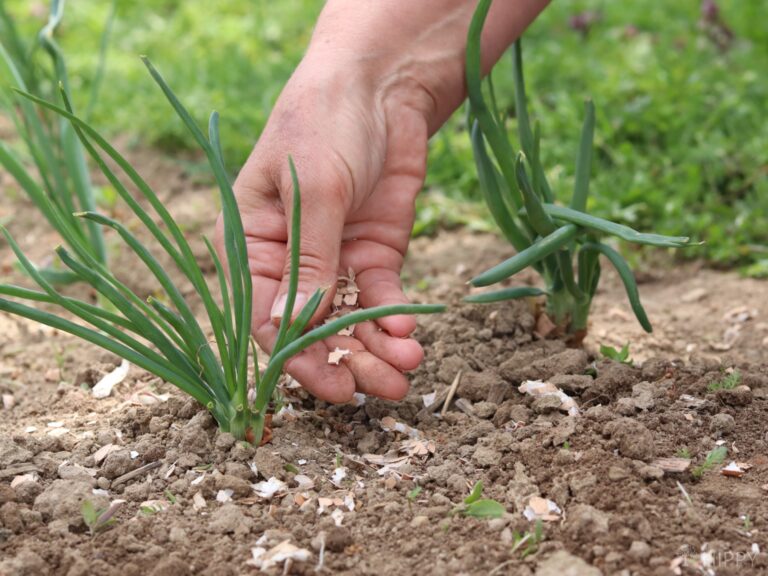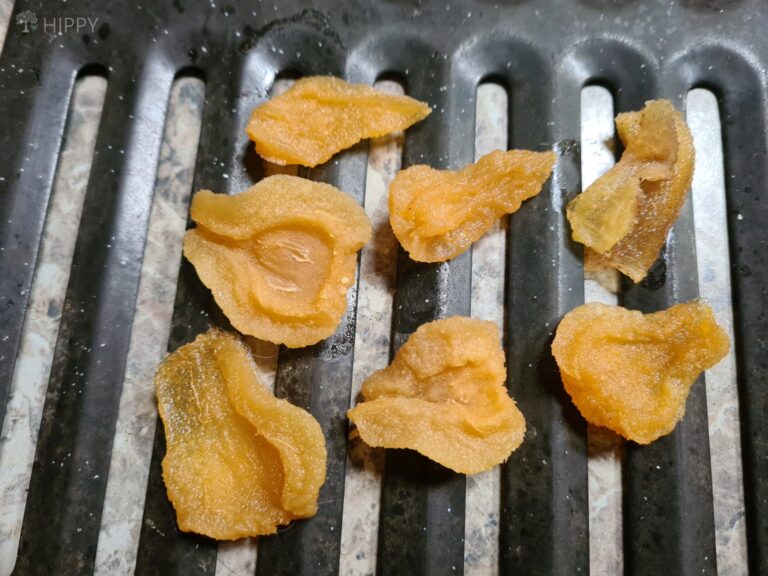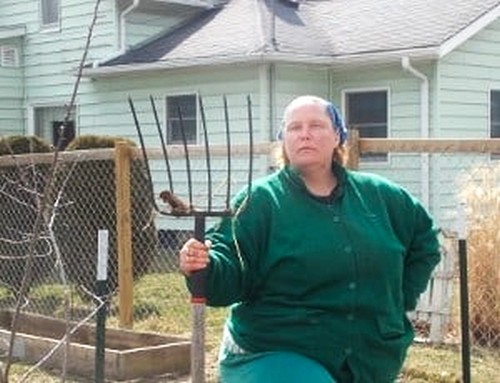When we first moved to our current home, I had no idea that I wanted to be a homesteader.
None at all. I didn’t know the first thing about gardening, chickens, ducks, rabbits, or even how to can food.

I had some things to learn along the way, and I have made many, many mistakes. Well, “opportunities to learn more” is what we call them. There were days it was easier, and days it was much harder. You can easily learn how to have the mind of a homesteader, too.
It just takes a few steps and you are on your way to becoming more self-sufficient. And you don’t even need to own land, or have any animals. Anyone can do these!
What Exactly Is Homesteading?
To understand how you can homestead without land or animals, you’ve got to first understand what homesteading actually is.
For many people, the word “homesteading” conjures up images of isolated farmers toiling in the fields and struggling to make ends meet.
But what does the term really mean? In its broadest sense, homesteading is simply a way of life that is focused on self-sufficiency and independence.
This can include growing your own food, raising animals for meat or milk, making your own clothing, and generating your own power.
A lot of people think you need to have homestead animals, like a pig, sheep, hens, dairy goats, dairy cows, poultry, guineas, or other livestock in order to be considered a homesteader.
However, raising livestock isn’t the only hallmark of the homesteading lifestyle. You don’t need acres upon acres of verdant pastures surrounded by perfect fences.
Not everyone who calls themselves a homesteader lives entirely off the grid, either.
For some, it simply means taking steps to reduce their dependence on commercial products and services.
Whether you’re interested in reducing your carbon footprint or becoming completely self-sufficient, homesteading is a great way to achieve your goals.
How Do You Homestead Without Land or Animals?
Here are a few ways you can become a real homesteader in any locations, climates, or set-ups.
Step 1: Learn to Cook from Scratch
Although many people already do this, it was the first thing I really needed to learn how to do. I bought so much boxed, processed and prepared foods it was crazy.
When I made spaghetti, it became code in our family for “we are going out to eat” since I was lousy at boiling water for pasta.
Learning to cook from scratch has saved our family so much money, too. A bag of flour, some salt, yeast, and sugar was much cheaper and better for us than store bought bread.
Learn how to make your own yogurt and how to smoke your own ham and bacon. Make your own butter or mill your own grain. Make your own ice cream, even!
These are simple steps you can try in your own kitchen – and you don’t need dozens of cages of chickens in order to be considered a homesteader, either.
Of course, as you get comfortable with that, you can move on to more traditional prepared foods like sourdough, kombucha, homemade sauerkraut, and such.
But, for now, if you are buying that blue box of mac and cheese, try making it yourself from scratch instead. You’ll have a much better flavor, trust me.
Step 2: Grow Your Own Food
This will make you feel like a homesteader right off the bat. Once you pick your own lettuce or tomato, it’s almost impossible to go back to store bought.

There is something soothing about digging in dirt, seeing that plant grow, and enjoying the harvest. Of course, if you do it “right”, the entire neighborhood will get tomatoes. Or zucchini.
Step 3: Learn How to Preserve That Food
My first canning “episode” was not pretty. I knew nothing about how to really do it.
I bought 1/2 bushel of apples to make my own applesauce. I had some quart jars, fresh from the store and a large aluminum pot. That’s it.
So, I cut up the apples, removed the cores, filled that large pot, covered it with water, and boiled the apples. Sounds about right, ya know?
Well, the issue was that pot was ALL I had to can in as well. So, after the apples were cooked, I put them in the blender to blend, then filled the jars.
I then had to wash the pot, fill it with water and then boil it to put the jars in. Instead of a rack on the bottom, I had an old dish towel to protect the jars.
For better or worse, that 1/2 bushel took me nearly 12 hours to sauce and can and for my efforts I got about 8 quarts.
I would recommend that first timers actually make sure to have the proper equipment, such as jars, lids, and a real canner.
And read the book that comes with the canner. It does have a lot of good information. The rest comes with experience and just trying.
If at all possible, try and can with someone else the first time to get a feel for the process. Or, just jump in with both feet and learn as you go…worked for me!

And, don’t forget that you can also learn to dehydrate and freeze your garden harvest!
Step 4: Learn How to Forage
If you don’t have land or animals, you can still get started by learning how to forage.
Foraging is the practice of collecting wild food sources, and it’s a great way to supplement your diet with fresh, healthy foods. Plus, it’s a fun and interesting way to get outside and explore your surroundings.
There are a few things you’ll need to know before you start foraging. First, make sure that you are only collecting from areas that are safe and clean.
Second, familiarize yourself with the plants and fungi that are safe to eat – there are some poisonous varieties out there, so it’s important to know what you’re looking for.
Finally, be respectful of the environment when you’re foraging – only take what you need, and be sure to leave some for others.
With a little bit of planning and knowledge, foraging can be a great way to get started on your homesteading journey – even if you don’t have land or animals!
Step 5: Make Your Own Herbal Remedies
Homesteading doesn’t necessarily mean living on a sprawling ranch with a bunch of animals.
In fact, you can successfully homestead without any land or animals at all. Making your own herbal remedies and learning how to use them is a great way to be more self-sufficient.
There are many herbal remedies that you can make at home with just a few simple ingredients.
One of my favorites is a throat spray made with honey, lemon and sage. This remedy is great for soothing a sore throat, and the honey also has antibacterial properties.
To make the throat spray, simply combine equal parts honey and lemon juice, along with a few drops of sage essential oil. Store the mixture in a small spray bottle and spritz it onto your throat as needed.
Step 6: Learn Skills, Like Sewing or Woodworking
Though the traditional homesteading lifestyle often includes owning a farm and raising animals, it is still possible to homestead without land or animals.
One way to do this is by learning skills like sewing or woodworking. These skills can be used to make practical items like clothes and furniture, as well as decorative items that can be sold.
You could even make your own soap or your own flies for fly fishing out of feathers!
In addition, growing a garden can provide fresh produce, and keeping honeybees can yield honey and wax.
You don’t need much space to do any of these things, and the skills you gain will be invaluable in your journey toward becoming self-sufficient.
Step 7: Reduce, Reuse, Recycle, Repurpose
One way to reduce your reliance on store-bought goods is to grow your own food.
Even if you don’t have a lot of outdoor space, you can still grow herbs and vegetables in pots. If you have a yard, you can expand your garden to include fruit trees and other plants.
You can also reduce your food waste by learning to preserve and canning your own food. Another way to reduce your impact on the environment is to reuse and recycle materials.
For example, you can use empty cans and jars as planters or storage containers. You can also repurpose old clothes by turning them into rags or quilts.
Finally, remember that one of the best ways to reduce your impact on the environment is to simply use less.
By making small changes in your habits, you can make a big difference in the world – and be well on your way to becoming a more self-sufficient homesteader.
Step 8: Compost
One of the most important skills for homesteaders is learning how to compost.
Composting is the process of breaking down organic matter, such as food scraps and leaves, into a rich soil amendment that can be used to improve the quality of your garden soil.
While you can purchase commercial compost bins, they are not necessary; with a little planning, you can easily create your own compost system using items that you likely already have around your home.
For homesteaders without land, vermicomposting is a great way to compost kitchen scraps and other organic waste.
By using worms to break down organic matter, vermicomposting can be done indoors or outdoors, making it a great option for those without a lot of space. In addition, vermicomposting is a great way to reduce your carbon footprint and help the environment.
The worms used in vermicomposting consume organic matter and produce castings, which are rich in nutrients. This makes vermicomposting an excellent way to recycle kitchen scraps and other organic waste.
Bonus points if you have access to ingredients that boost soil fertility, like chicken manure, even if you aren’t raising your own chickens. These can really amp up your composting efforts!
Moreover, the process of vermicomposting produced very little noise and odor, making it a great option for those who want to compost but do not want to draw attention to their homestead.
Step 9: Share and Barter With Others
A homestead is typically thought of as a farmhouse with a few acres of land to raise animals and grow crops.
However, it is possible to homestead without owning any land or animals. One way to do this is by bartering with others.
For example, if you have excess produce from your garden, you could trade it for eggs from a neighbor’s chickens.
Or, if you have extra firewood, you could trade it for hay for your goats. Bartering is a great way to get the resources you need without having to spend money.
One more thing you can do is to share resources with others. For example, you could join a community garden or take turns caring for each other’s animals.
Sharing resources can help you save money and build relationships with others in your community – homesteading at its finest.
Step 10: Shop Local
One of the core values of homesteading is self-sufficiency, or the ability to provide for oneself and one’s family without reliance on others.
In recent years, there has been a renewed interest in homesteading, with people seeking out ways to live more independently.
One way to do this is to shop local. By patronizing businesses in your community, you can help to ensure that they remain viable and that your community remains strong.
When you shop local, you also have the opportunity to meet the people who produce the food and goods you purchase.
You can also support your local farmers by shopping at farmers markets or joining a CSA.
This personal connection is another key part of homesteading, as it helps to create a sense of community and shared purpose.
So next time you’re looking for an item, consider shopping local first. It’s a great way to support your community and practice self-sufficiency.
Step 11: Be a Good Steward of the Land
No matter where you live, you can be a good steward of the land. Even if you don’t have a lot of land or any animals, there are still ways you can homestead.
One way is to grow your own food. You can start a garden in your yard or on your patio.
If you don’t have enough space to grow all the food you need, you can still grow some of it and supplement the rest with purchases from local farmers markets or community gardens.
Another way to be a good steward of the land is to reduce your reliance on single-use plastics and other disposable items.
Use reusable bags when you go shopping, carry a refillable water bottle with you, and compost your kitchen scraps instead of throwing them away.
Finally, educate yourself and others about sustainable living practices. The more people know about how to care for the land, the more likely they are to do it.
Step 12: Pass On Homesteading Skills
Advocate for sustainable living practices in your community. Teach others what you know. No matter what your area of expertise may be, passing on your homesteading skills to others is a great way to embark on this fulfilling lifestyle.
This could involve lobbying for green space in your city, organizing a community composting program, or starting a community-supported agriculture (CSA) program.
By sharing your knowledge and skills with others, you can help create a more sustainable world for all.
Step 13: Prepare for an Emergency
Regardless of where you live, it’s always a good idea to be prepared for an emergency.
While many people associate emergency preparedness with stockpiling supplies, there are actually a number of other important steps that you can take to ensure your safety in the event of an emergency.
One of the most important things that you can do is to create an emergency plan. This should include a list of important phone numbers, as well as a plan for how you will get in touch with loved ones in the event of an emergency.
Additionally, it’s a good idea to put together an emergency kit, which should include items like water, food, and first-aid supplies. By taking these simple steps, you can help ensure your safety in the event of an emergency.
Never Stop Learning
There are homesteaders who live on large tracts of rural land and raise a variety of animals, but this is not the only way to homestead.
It is possible to have a homestead without land or animals. This type of homesteading often relies on urban farming and gardening.
Community gardens, rooftop gardens, and even window boxes can provide enough space to grow a wide variety of fruits, vegetables, and herbs.
Other important homesteading skills include canning and preserving food, as well as learning how to sew, knit, and crochet. These skills can be learned from books, online tutorials, or even in-person classes.


Heather’s homesteading journey started in 2006, with baby steps: first, she got a few raised beds, some chickens, and rabbits. Over the years, she amassed a wealth of homesteading knowledge, knowledge that you can find in the articles of this blog.
Learn more about Heather and the rest of the writers on this page.

This is great. I guess my single mom urban homestead is on track. I always get discouraged because of our bylaws, but I can garden. I have learned to pickle. I have a nice size deep freezer. I almost always make our own bread. And we rarely eat out. We are out of debt. My teenage son is house sitting right now and has asked for groceries. He has no appetite for the processed foods the owners provided. 🙂 Home repairs and decluttering my downfall. Of course, there are people out there who think I am crazy because I don’t ‘keep up with the Joneses’.
keeping up with the Joneses is crazy, in my opinion 🙂 good for you in being “weird”!
So many great ideas on this post! The no spend month really stood out to me. That would make a huge difference in a savings account.
This is amazing! I did not know homesteading can be done in such an interesting and convenient way. Thank you for sharing this!
thanks for stopping by!
Good post and great tips! All of them are so true